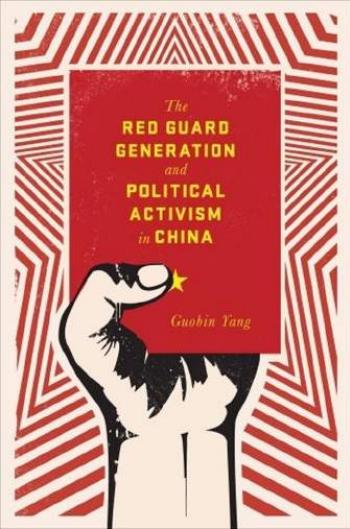The Red Guard Generation and Political Activism in China by Guobin Yang

Author:Guobin Yang [Yang, Guobin]
Language: eng
Format: epub, pdf
Tags: yang14964, HIS008000, HISTORY / Asia / China, POL054000, POLITICAL SCIENCE / World / Asian
Publisher: Columbia University Press
Published: 2016-05-23T16:00:00+00:00
Sources: Yang, Zhongguo Zhi Qing Wen Xue Shi; Ji, “Cha Dui Sheng Ya”; Liao, Chen Lun De Sheng Dian; Mu Zhai, Huang Ruo Ge Shi—Wo De Zhiq Ing Sui Yue; Yin, Shi Zong Zhe De Zu Ji; Leng, “Leng Wei Kou Shu (III).”
As Table 5.2 shows, the participants were most likely from the same city and even the same school. Some had been friends or been involved in salon activities before being sent down. One group had been friends in the Red Guard movement. In the village, they edited and published an underground magazine with skills learned in school as Red Guards. As one of them recalls, “First we talked about it among a few friends. Then we wrote to friends in other places to ask them to contribute. After receiving their contributions, we selected some articles and poems and mimeographed them into a magazine. Then we sent the magazines to other places—educated youth in the neighboring counties, in Beidahuang, in Northern Shaanxi and Inner Mongolia, etc.”63
The best known of all were the previously mentioned poetry circles in the Baiyangdian Lakes region. These circles consisted of former schoolmates or fellow salon participants from Beijing, mostly sent down in early 1969. They included the major contributors to the future literary journal Today (Jin tian) in the Democracy Wall movement: Bei Dao, Mang Ke, Lin Mang, Duo Duo, and Jiang He. Their activities encompassed the whole range of underground activities found among sent-down youth in that period, from borrowing, copying, and circulating banned books and handwritten manuscripts to reading, writing, and discussing them. Lin Mang recalls that he often met with Duo Duo, Song Haiquan, and Gan Tiesheng in their lakeside village to talk about life experiences and poetry writing: “These kinds of conversations were frequent. Whenever we got together, these were the things we talked about. We also exchanged forbidden books.”64 According to Duo Duo’s recollections, he wrote many poems in his six-year stay in the Baiyangdian Lakes region. Each year after 1972, he produced one notebook full of poems for exchange with Mang Ke. These poems went into underground circulation in the literary salons in Beijing.65
Strategically located in rural Hebei Province near Beijing, the young people in the Baiyangdian Lakes circles were both linked to sent-down youth in other parts of the country and to groups in Beijing (such as Zhao Yifan’s salon). They functioned like communication hubs between China’s rural areas and its political and cultural center. On the one hand, these circles of cultural activists—poets, essayists, and novelists—were large enough to provide audience and critics for the authors. On the other, the communication channels helped to circulate their works to a wider audience.
Articulating A New Sense of Self and Society
What did the underground cultural movement accomplish? Certainly, in the aftermath of the Red Guard movement, the reading, copying, writing, and circulation of songs, stories, poems, books, and letters in small groups provided social support, intellectual stimulation, and psychological comfort for a generation in the doldrums. Equally important, these
Download
The Red Guard Generation and Political Activism in China by Guobin Yang.pdf
This site does not store any files on its server. We only index and link to content provided by other sites. Please contact the content providers to delete copyright contents if any and email us, we'll remove relevant links or contents immediately.
The Vikings: Conquering England, France, and Ireland by Wernick Robert(79845)
Ali Pasha, Lion of Ioannina by Eugenia Russell & Eugenia Russell(40102)
The Conquerors (The Winning of America Series Book 3) by Eckert Allan W(36959)
The Vikings: Discoverers of a New World by Wernick Robert(36903)
Cecilia; Or, Memoirs of an Heiress — Volume 1 by Fanny Burney(32396)
Cecilia; Or, Memoirs of an Heiress — Volume 3 by Fanny Burney(31774)
Cecilia; Or, Memoirs of an Heiress — Volume 2 by Fanny Burney(31743)
Empire of the Sikhs by Patwant Singh(22922)
The Secret History by Donna Tartt(18786)
Hans Sturm: A Soldier's Odyssey on the Eastern Front by Gordon Williamson(18448)
Cat's cradle by Kurt Vonnegut(15126)
Pimp by Iceberg Slim(14252)
Sapiens: A Brief History of Humankind by Yuval Noah Harari(14183)
Talking to Strangers by Malcolm Gladwell(13156)
Norse Mythology by Gaiman Neil(13154)
Leonardo da Vinci by Walter Isaacson(13127)
4 3 2 1: A Novel by Paul Auster(12245)
Underground: A Human History of the Worlds Beneath Our Feet by Will Hunt(11992)
The Radium Girls by Kate Moore(11886)
